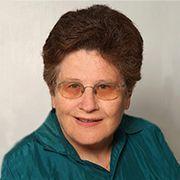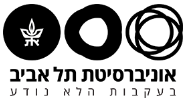Professor Emeritus, Sackler Faculty of Medicine
פרופ' אסתר סגל

מידע כללי
Biography
Education
| 1958 | M.Sc., Microbiology | Tel Aviv University |
| 1969 | Ph.D. in Yeast Genetics | University of Bern, Switzerland |
| 1975-76 | Specialization in Medical Mycology | CDC, Atlanta, Georgia, U.S.A. |
| 1978 | Histopathology | Armed Forces Institute of Pathology, Washington D.C., U.S.A. |
| 1985 | Molecular Biology | University of Illinois, Urbana, Illinois, U.S.A, |
תחומי מחקר
Research
We are currently focusing on two major topics:
- Polyene-Intralipid Antifungals, developed in our laboratory.
- Pathogenesis of Candida Infections – Are All Candida Alike?.
1.Polyene-Intralipid Antifungals
:Invasive fungal infections (IFI) due to opportunistic fungi constitute a serious medical problem, with considerable morbidity and mortality, particularly for immunocompromised and critically ill patients. The most common yeast pathogens causing IFI are Candida and Cryptococcus spp., while Aspergillus spp. and Zygomycetes are the most frequent opportunistic molds that cause IFI. Existing treatment options for most IFI do not provide acceptable response rates, and the management of IFI remains a great challenge. The polyenes in use: amphotericin B (AMB) against invasive and nystatin (NYT) against mucosal-cutaneous mycoses are antifungals with broad fungicidal spectrum of activity, however their systemic use is associated with significant adverse effects. To overcome the latter various lipid formulations (primarily of AMB) were developed, some of which are in clinical use, however their use is limited due to high cost.
Our laboratory has developed two novel polyene formulations: amphotericin B–Intralipid (AMB-IL) and Nystatin-Intralipid (NYT-IL), which are easy and affordable preparations. The new formulation of NYT: NYT-IL, became suitable for systemic use and could thus be considered for treatment of IFI. AMB-IL & NYT-IL were characterized physically and chemically. Stability under different maintenance conditions, toxicity and antifungal activity were tested. They were found to be active in vitro and in vivo in experimental infections of Candida and Aspergillus. Pharmacokinetics, including tissue distribution of the two formulations was studied, revealing a different pattern from the conventional formulations of the drugs, which might explain the reduced toxicity noted vs. that of the conventional formulations. Host responses to AMB-IL & NYT-IL were also investigated, indicating a reduced level of pro-inflammatory cytokine production. In addition, mechanisms of activity were explored as well.
Current and upcoming projects include: 1. investigation of activity of the polyene-intralipid formulations against other mycoses that are difficult to treat; 2. combinations of the polyene-intralipid formulations with antifungals characterized by different modes of activity in order to increase therapeutic efficacy. 3. combinations of the polyene-intralipid formulations with immunomodulators in order to increase therapeutic efficacy.
2. Pathogenesis of Candida infections – Are All Candida Alike?
Candida albicans has the ability to cause muco-cutaneous as well as systemic infections. The latter, primarily, in compromised hosts. It is generally believed that the host’s status is the factor determining the clinical condition. In our studies we asked whether there might be specific attributes in the fungus, which may affect the clinical entity. Specifically, are there differences among the strains?
We undertook to explore whether C. albicans strains isolated from patients with systemic candidiasis differ from those isolated from patients with mucosal-cutaneous infection in respect to virulence attributes and/or genotype.
We assessed in vitro characteristics associated with virulence, such as: adherence to host cells, biofilm formation, proteinase and phospholipase production of strains from the two sources: systemic and mucosal-cutaneous infection.
We also tested the strains in experimental in vivo models: mice and Galleria mellonella. Concomitantly, genotyping using the MLST technology was carried out.
Current and upcoming projects include: 1. further pathogenicity profiling; 2. comparative host-fungus interactions; 3. further in vivo evaluations; 4. further genetic profiling.
פרסומים
Publications (last 3 years):
Semis, R., Polacheck, I. and Segal, E. (2010). Nystatin–Intralipid preparation:
Characterization and in vitro activity against yeasts and molds. Mycopathologia,
169: 333–341.
Eilenberg H., Pnini-Cohen S., Rahamim Y., Sionov E., Segal E., Carmeli S. and Zilberstein A. (2010) Induced production of antifungal naphthoquinones in the pitchers of the carnivorous plant Nepenthes khasiana. Journal of Experimental Botany. 61: 911-922
Semis, R., Mendlovic, S., Polacheck, I. and Segal, E. (2011). Activity of an Intralipid
formulation of nystatin in murine systemic candidiasis. Intern. J. Antimicrob.
Agents, 38: 336–340.
Semis, R., Nili, S.S., Zaslavsky, Z., Munitz, A., Polacheck, I. and Segal, E. (2012).
Pharmacokinetics, tissue distribution and immunomodulatory effect of
Intralipid formulation of nystatin in mice. J. Antimicrob. Chemother, 67: 1716–
1721.
Semis, R., Kagan, S., Berdicevsky, I., Polacheck, I. and Segal, E. (2013). Mechanism
of activity and toxicity of Nystatin – Intralipid. Med. Mycol., 51: 422–431.
Alastruey-Izquierdo A, Mandelblat M, Ben Ami R, Perlin DS, Segal E. Multilocus sequence typing of Candida albicans isolates from candidemia and superficial candidiasis in Israel
Med Mycol. 2013 Mar 22. [Epub ahead of print]
Segal E. and Semis R. Polyene – Intralipid Formulation Antifungals Against Invasive Mycoses. Biotechnology Vol. 7: Drug Discovery, In Press





